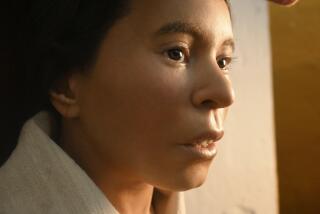âOldest Evidenceâ of Egyptian Mummification Is Found
SAKKARA, Egypt â Archeologists on Sunday opened a 5,000-year-old wooden coffin in the desert near Cairo to find a pile of bones that the scientists said showed the oldest evidence yet of human mummification in Egypt.
The bones were found with remnants of skin attached and with a resin used in the mummification process.
âThis is ... the oldest evidence,â Egyptian antiquities chief Zahi Hawass said.
The coffin was found in one of more than 20 mud-brick tombs, which Hawass said belonged to officials who had lived between 3100 BC and 2890 BC during Egyptâs 1st Dynasty.
âWe are continuing our excavations to reveal more about the tombs of the officials who ruled Egypt under the kings of Dynasty One,â Hawass said.
Egyptian mummification techniques developed over the centuries. Egyptians are known to have embalmed bodies by from 2613 BC to 2494 BC.
Methods used from 1567 BC to 1200 BC were the most effective at preserving the dead, and the remains of King Ramses II, who ruled during that period, have been displayed.
Techniques used from 1085 BC to 945 BC were the most elaborate, when the dried, washed and wrapped body was strapped with cloth for protection and covered with jewelry.
More to Read
Sign up for Essential California
The most important California stories and recommendations in your inbox every morning.
You may occasionally receive promotional content from the Los Angeles Times.










